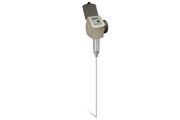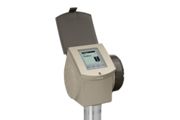Discontinued: Field Instruments
SmartLine RM Series - Guided Level Meters
SmartLine RM Series of Guided Level Meters measures distance, level, interface, volume and mass.
Please sign in to access more documents
Once signed in, you may be able to access additional documents for your account.
What Is It?
The SmartLine Guided Radar Level Meter can measure the level of a wide range of liquid products on a large variety of installations within the stated pressure and temperature range, including LPG and LNG. It can be deployed in blending tanks, distillation tanks, process tanks, separators, solid silos (inventory) and storage tanks. It does not require calibration or commissioning when installed, and can measure liquid interface with or without an air gap.
The level meter can also measure level and interface simultaneously as it has an optional second analog output. Lastly, the level meter can measure powders and granulates of materials with dielectric constants of 1.6 and even lower. A variety of rigid and flexible probes allow measurement in silos up to 35 m (115 ft) high.
How Does It Work?
TDR uses low-intensity electromagnetic pulses along a rigid or flexible conductor. These pulses move at the speed of light, and when they reach the surface of the product to be measured, they are reflected with an intensity that depends on the dielectric constant of the product (for example, water has a high dielectric constant and reflects the pulse back to the meter converter at 80% of its original intensity). The device measures the time from when the pulse is transmitted to when it is received. The time value is converted into an output current of 4-20 mA and/or a digital signal corresponding to the level.
What Problems Does It Solve?
SmartLine Guided Radar Level Meter is used in applications where technologies such as capacitance, hydrostatic level or ultrasonic level measurements may have been used earlier. Immune to changes in conductivity, density, pressure and temperature, the level meter offers better reproducibility and accuracy. Since the signal travels up and down the probe, it is also unaffected by the angle of repose of a granular material.
Application Note
Brochure
Manuals and Guides
Data Sheet
Brief
Case Study
Please sign in to view part numbers available for purchase based on your account Sign In



